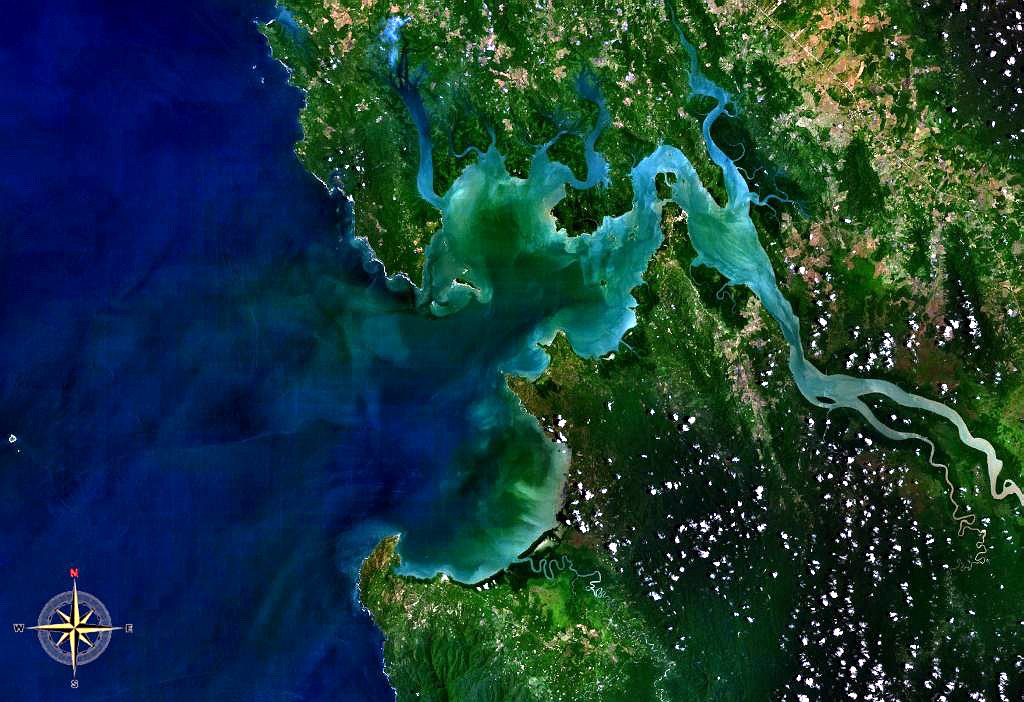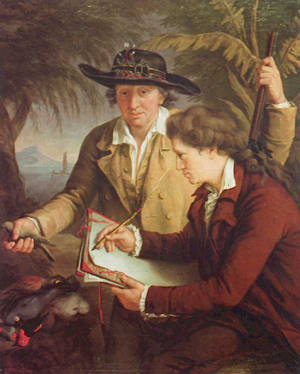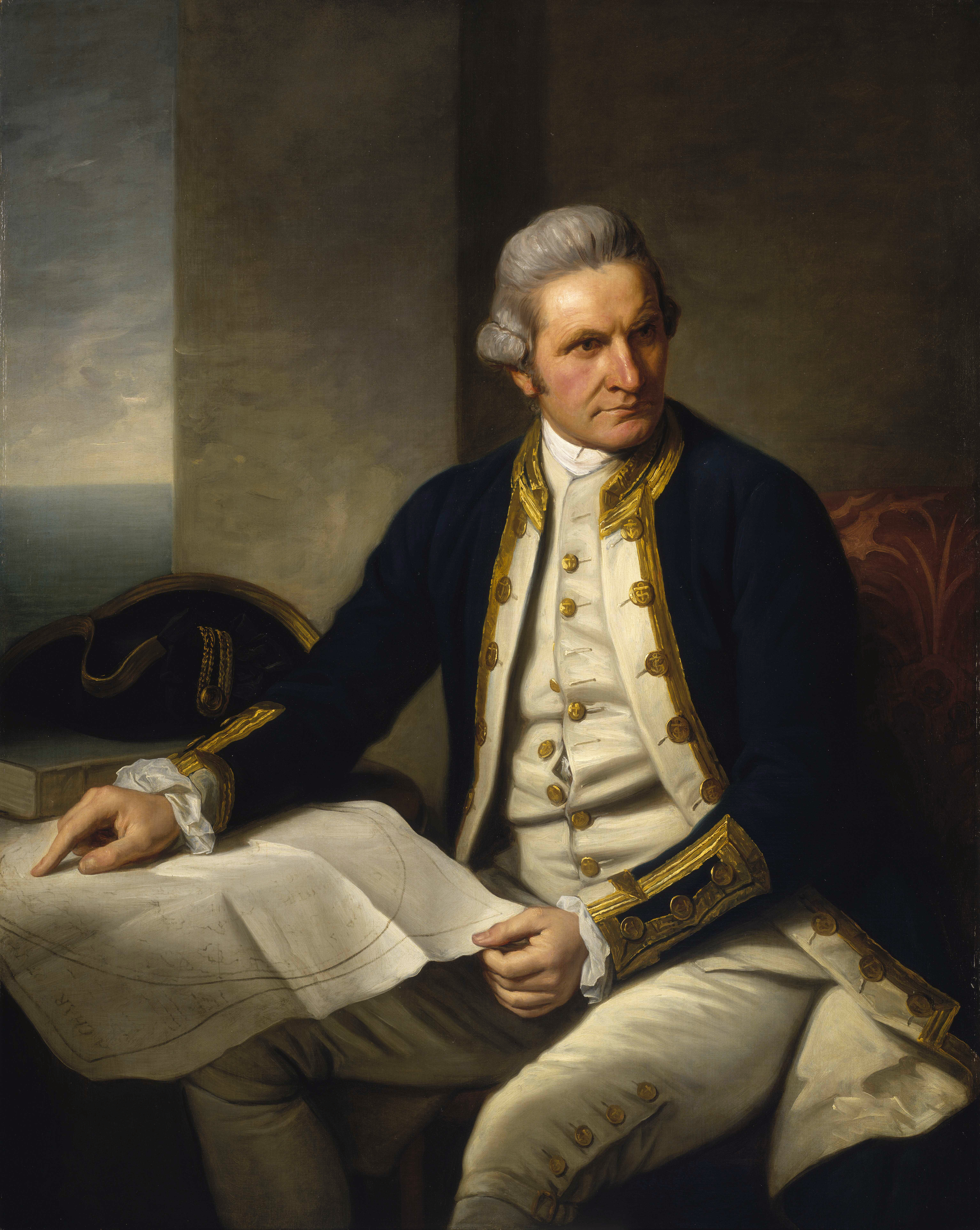|
South Seas
Today the term South Seas, or South Sea, most commonly refers to the portion of the Pacific Ocean south of the equator. The term South Sea may also be used synonymously for Oceania, or even more narrowly for Polynesia or the Polynesian Triangle, an area bounded by the Hawaiian Islands, New Zealand and Easter Island. Pacific Islanders are commonly referred to as South Sea Islanders, particularly in Australia. The term was first coined as ''Mar de Sur'', or "South Sea", by Spanish conquistador Vasco Núñez de Balboa in 1513 as he it encountered on the southern coast of the Isthmus of Panama and it was applied to the entirety today's Pacific Ocean. In 1520, Ferdinand Magellan named the same ocean the Pacific Ocean, and over time Magellan's name became more well-known. Origin The Spanish conquistador Vasco Núñez de Balboa coined the term "South Sea" when he traveled across the Isthmus of Panama and reached the Bay of San Miguel, naming the ocean ahead ''Mar del Sur'' ... [...More Info...] [...Related Items...] OR: [Wikipedia] [Google] [Baidu] |
Pacific Ocean
The Pacific Ocean is the largest and deepest of Earth's five Borders of the oceans, oceanic divisions. It extends from the Arctic Ocean in the north to the Southern Ocean, or, depending on the definition, to Antarctica in the south, and is bounded by the continents of Asia and Australia in the west and the Americas in the east. At in area (as defined with a southern Antarctic border), the Pacific Ocean is the largest division of the World Ocean and the hydrosphere and covers approximately 46% of Earth's water surface and about 32% of the planet's total surface area, larger than its entire land area ().Pacific Ocean . ''Encyclopædia Britannica, Britannica Concise.'' 2008: Encyclopædia Britannica, Inc. The centers of both the Land and water hemispheres, water hemisphere and the Western Hemisphere, as well as the Pole of inaccessi ... [...More Info...] [...Related Items...] OR: [Wikipedia] [Google] [Baidu] |
Bay Of San Miguel
The Bay of San Miguel or Gulf of San Miguel () is a bay of the Gulf of Panama, located on the Pacific coast of Darién Province in eastern Panama. The bay is located at . The bay is the drainage of the Geography of Panama#Chucunaque-Tuira Basin, Chucunaque-Tuira Basin to the Pacific Ocean. It is fed by the Chucunaque River, Chucunaque and Tuira River, Tuira river systems that cover three fourths of Darién Province. At its southern end is Cape Garachiné (also known as Point Garachina), and at its northern end is Punta San Lorenzo (Darién), Punta San Lorenzo (a.k.a. Cape Gardo). See also * References Bays of Panama, San Miguel Bays of the Pacific Ocean, San Miguel, Panama Landforms of Darién Province Gulf of Panama Panamanian coasts of the Pacific Ocean {{Darién-geo-stub ... [...More Info...] [...Related Items...] OR: [Wikipedia] [Google] [Baidu] |
Denis Diderot
Denis Diderot (; ; 5 October 171331 July 1784) was a French philosopher, art critic, and writer, best known for serving as co-founder, chief editor, and contributor to the along with Jean le Rond d'Alembert. He was a prominent figure during the Age of Enlightenment. Diderot initially studied philosophy at a Society of Jesus, Jesuit college, then considered working in the church clergy before briefly studying law. When he decided to become a writer in 1734, his father disowned him. He lived a Bohemianism, bohemian existence for the next decade. In the 1740s he wrote many of his best-known works in both fiction and non-fiction, including the 1748 novel ''The Indiscreet Jewels, Les Bijoux indiscrets'' (The Indiscreet Jewels). In 1751 Diderot co-created the ''Encyclopédie'' with Jean le Rond d'Alembert. It was the first encyclopedia to include contributions from many named contributors and the first to describe the mechanical arts. Its secular tone, which included articles skepti ... [...More Info...] [...Related Items...] OR: [Wikipedia] [Google] [Baidu] |
Garden Of Eden
In Abrahamic religions, the Garden of Eden (; ; ) or Garden of God ( and ), also called the Terrestrial Paradise, is the biblical paradise described in Genesis 2–3 and Ezekiel 28 and 31.. The location of Eden is described in the Book of Genesis as the source of four tributaries. Various suggestions have been made for its location: at the head of the Persian Gulf, in southern Mesopotamia where the Tigris and Euphrates rivers run into the sea; and in Armenia. Others theorize that Eden was the entire Fertile Crescent or a region substantial in size in Mesopotamia, where its native inhabitants still exist in cities such as Telassar. Like the Genesis flood narrative, the Genesis creation narrative and the account of the Tower of Babel, the story of Eden echoes the Mesopotamian myth of a king, as a primordial man, who is placed in a divine garden to guard the tree of life. Scholars note that the Eden narrative shows parallels with aspects of Solomon's Temple and Jerusalem, at ... [...More Info...] [...Related Items...] OR: [Wikipedia] [Google] [Baidu] |
Noble Savage
In Western anthropology, Western philosophy, philosophy, and European literature, literature, the Myth of the Noble savage refers to a stock character who is uncorrupted by civilization. As such, the "noble" savage symbolizes the innate goodness and moral superiority of a primitive people living in harmony with nature. In the heroic drama of the stageplay ''The Conquest of Granada, The Conquest of Granada by the Spaniards'' (1672), John Dryden represents the ''noble savage'' as an archetype of Man-as-Creature-of-Nature. The intellectual politics of the Stuart Restoration (1660–1688) expanded Dryden's playwright usage of ''savage'' to denote a human ''wild beast'' and a ''wild man''. Concerning civility and incivility, in the ''Inquiry Concerning Virtue, or Merit'' (1699), the philosopher Anthony Ashley-Cooper, 3rd Earl of Shaftesbury, said that men and women possess an innate morality, a sense of right and wrong conduct, which is based upon the intellect and the emotions, and not ... [...More Info...] [...Related Items...] OR: [Wikipedia] [Google] [Baidu] |
Jean-Jacques Rousseau
Jean-Jacques Rousseau (, ; ; 28 June 1712 – 2 July 1778) was a Republic of Geneva, Genevan philosopher (''philosophes, philosophe''), writer, and composer. His political philosophy influenced the progress of the Age of Enlightenment throughout Europe, as well as aspects of the French Revolution and the development of modern political, economic, and educational thought. His ''Discourse on Inequality'', which argues that private property is the source of inequality, and ''The Social Contract'', which outlines the basis for a legitimate political order, are cornerstones in modern political and social thought. Rousseau's sentimental novel ''Julie, or the New Heloise'' (1761) was important to the development of preromanticism and romanticism in fiction. His ''Emile, or On Education'' (1762) is an educational treatise on the place of the individual in society. Rousseau's autobiographical writings—the posthumously published ''Confessions (Rousseau), Confessions'' (completed in 17 ... [...More Info...] [...Related Items...] OR: [Wikipedia] [Google] [Baidu] |
A Voyage Round The World
''A Voyage Round the World'' (complete title ''A Voyage Round the World in His Britannic Majesty's Sloop, Resolution, Commanded by Capt. James Cook, During the Years 1772, 3, 4, and 5'') is Georg Forster's report on the second voyage of the British explorer James Cook. During the preparations for Cook's voyage, the expedition's naturalist Joseph Banks had withdrawn his participation, and Georg's father, Johann Reinhold Forster, had taken his place at very short notice, with his seventeen-year-old son as his assistant. They sailed on with Cook, accompanied by under Tobias Furneaux. On the voyage, they circumnavigated the world, crossed the Antarctic Circle and sailed as far south as 71° 10, discovered several Pacific islands, encountered diverse cultures and described many species of plants and animals. When they returned to England after more than three years, disagreement about the publication rights for a narrative of the journey arose. After plans agreed with John ... [...More Info...] [...Related Items...] OR: [Wikipedia] [Google] [Baidu] |
Louis Antoine De Bougainville
Louis-Antoine, Comte de Bougainville (; 12 November 1729 – 31 August 1811) was a French military officer and explorer. A contemporary of the British explorer James Cook, he served in the Seven Years' War and the American Revolutionary War. Bougainville later gained fame for his expeditions, including a circumnavigation of the globe in a scientific expedition in 1763, the first recorded settlement on the Falkland Islands, and voyages into the Pacific Ocean. Bougainville Island of Papua New Guinea as well as the flowering plant '' Bougainvillea'' are named in his honour. Biography Early career Bougainville was born in Paris, the capital of the Kingdom of France, the son of notary Pierre-Yves de Bougainville (1688–1756), on 12 November 1729. In early life, he studied law, but soon abandoned the profession. In 1753, he entered the French Army in the corps of Musketeers of the Guard. At the age of twenty-five he published a treatise on integral calculus, as a supplement to G ... [...More Info...] [...Related Items...] OR: [Wikipedia] [Google] [Baidu] |
Joseph Banks
Sir Joseph Banks, 1st Baronet, (19 June 1820) was an English Natural history, naturalist, botanist, and patron of the natural sciences. Banks made his name on the European and American voyages of scientific exploration, 1766 natural-history expedition to Newfoundland and Labrador. He took part in Captain James Cook's First voyage of James Cook, first great voyage (1768–1771), visiting Brazil, Tahiti, and after 6 months in New Zealand, Australia, returning to immediate fame. He held the position of president of the Royal Society for over 41 years. He advised King George III on the Royal Botanic Gardens, Kew, sending botanists around the world to Botanical expedition, collect plants, he made Kew the world's leading botanical garden. He is credited for bringing 30,000 plant specimens home with him; amongst them, he was the first European to document 1,400. Banks advocated Colony of New South Wales, British settlement in New South Wales and the colonisation of Australia, as wel ... [...More Info...] [...Related Items...] OR: [Wikipedia] [Google] [Baidu] |
Georg Forster
Johann George Adam Forster, also known as Georg Forster (; 27 November 1754 – 10 January 1794), was a German geography, geographer, natural history, naturalist, ethnology, ethnologist, travel literature, travel writer, journalist and revolutionary. At an early age, he accompanied his father, Johann Reinhold Forster, on several scientific expeditions, including James Cook's Second voyage of James Cook, second voyage to the Pacific Ocean, Pacific. His report of that journey, ''A Voyage Round the World'', contributed significantly to the ethnology of the people of Polynesia and remains a respected work. As a result of the report, Forster, who was admitted to the Royal Society at the early age of twenty-two, came to be considered one of the founders of modern scientific travel literature. After returning to continental Europe, Forster turned toward academia. He taught natural history at the Collegium Carolinum (Kassel), Collegium Carolinum in the Ottoneum, Kassel (1778–84), a ... [...More Info...] [...Related Items...] OR: [Wikipedia] [Google] [Baidu] |
Johann Reinhold Forster
Johann Reinhold Forster (; 22 October 1729 – 9 December 1798) was a German Reformed pastor and naturalist. Born in Tczew, Dirschau, Pomeranian Voivodeship (1466–1772), Pomeranian Voivodeship, Polish–Lithuanian Commonwealth (now Tczew, Poland), he attended school in Dirschau and Marienwerder before being admitted at the Joachimsthalsches Gymnasium in Berlin in 1745. Skilled in classical and biblical languages, he studied theology at the University of Halle. In 1753, he became a parson at a parish just south of Danzig. He married his cousin Justina Elisabeth Nicolai in 1754, and they had seven children; the oldest child was Georg Forster, George Forster, also known as Georg. In 1765, Forster was commissioned by the Russian government to inspect the new colonies on the Volga. Accompanied by George on the journey, he observed the conditions of the colonists and made scientific observations that were later read at the Russian Academy of Sciences. After making a report that wa ... [...More Info...] [...Related Items...] OR: [Wikipedia] [Google] [Baidu] |
James Cook
Captain (Royal Navy), Captain James Cook (7 November 1728 – 14 February 1779) was a British Royal Navy officer, explorer, and cartographer famous for his three voyages of exploration to the Pacific and Southern Oceans, conducted between 1768 and 1779. He completed the first recorded circumnavigation of the main islands of New Zealand and was the first known European to visit the eastern coastline of Australia and the Hawaiian Islands. Cook joined the British merchant navy as a teenager before enlisting in the Royal Navy in 1755. He served during the Seven Years' War, and subsequently surveyed and mapped much of the entrance to the St. Lawrence River during the Battle of the Plains of Abraham, siege of Quebec. In the 1760s, he mapped the coastline of Newfoundland (island), Newfoundland and made important astronomical observations which brought him to the attention of the Admiralty (United Kingdom), Admiralty and the Royal Society. This acclaim came at a crucial moment in Brit ... [...More Info...] [...Related Items...] OR: [Wikipedia] [Google] [Baidu] |








